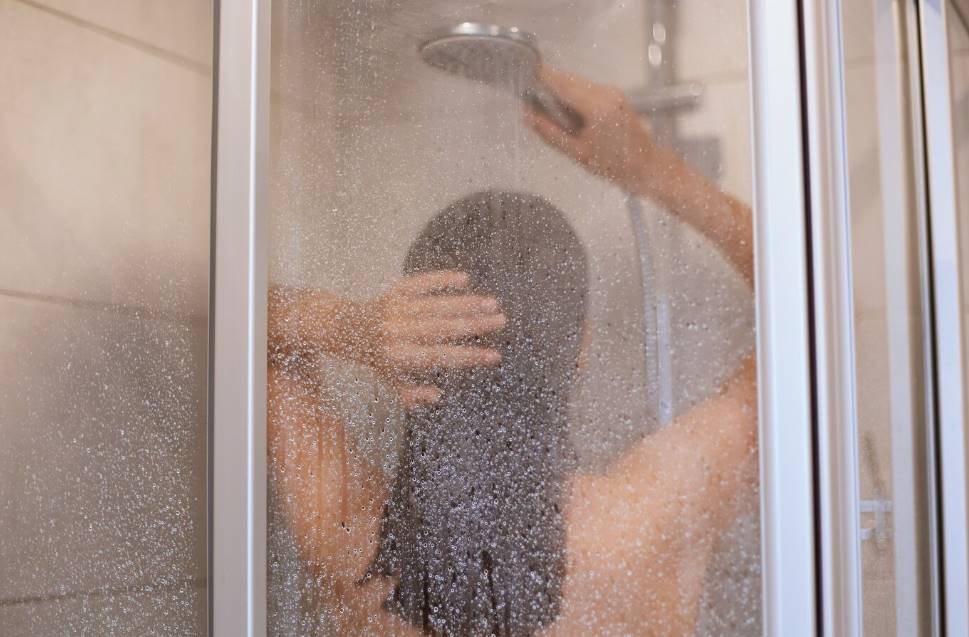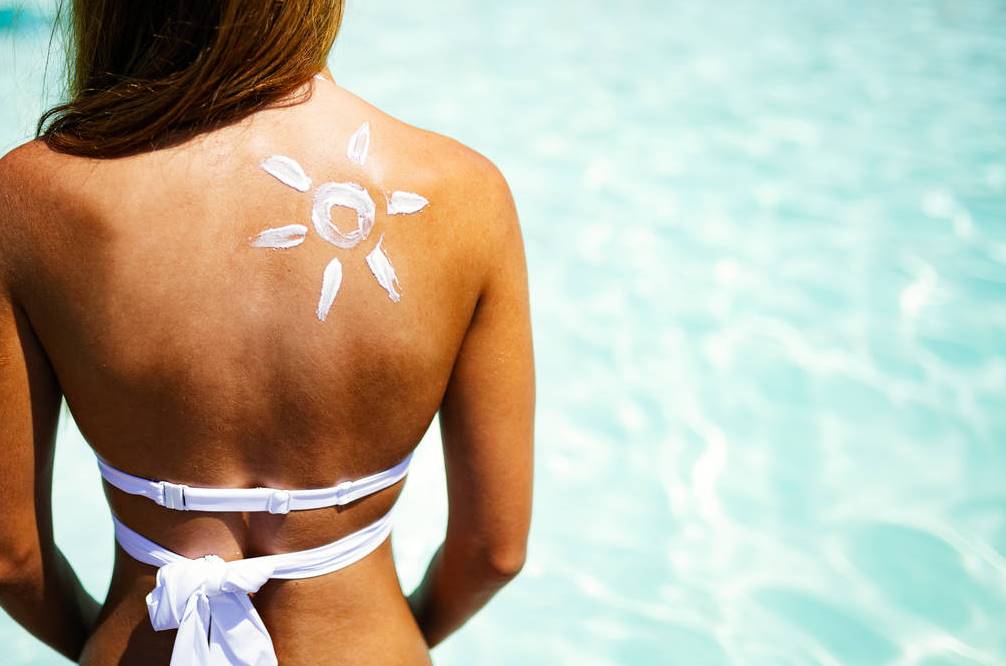Spray tanning is an innovator in getting a sun-kissed glow without getting hurt by UV rays. But there are a few things you should watch out for if you want your spray tan to look great. This detailed guide will show you how to avoid making the most typical spray tan mistakes. Say goodbye to splotchy, uneven tans and welcome to a glow that looks healthy and natural.
Choosing the Right Spray Tan Salon
Before you start spray tanning, the first thing you need to do is find the right service. Tan shops are becoming more popular because they offer quick and easy solutions, so their demand has increased significantly.
Mistakes to Avoid Before Your Spray Tan
Not Removing Old Spray Tan Before New One
The most awful thing that you can do is this. If you put a new spray tan on top of a patchy and flaky old one, the two will not look good together. So, get rid of your spray tan or self-tan properly before you get a new one.
You Didn't Exfoliate Beforehand
We've all heard the saying, "Good tans are given to those that exfoliate." If you didn't get the perfect tan you were hoping for and instead have streaky, patchy skin, this is usually a sign that you didn't clean properly the night before you put on your tan. By exfoliating, you eliminate dead skin cells that might have dirt, old tan, or other things that can get in the way of your new tan and make it look uneven.
Don't Use Self-Tanner
It's not easy to be pale, especially if you're used to having a brown glow, but don't use self-tanner or even tinted moisturiser to make yourself look better. As your spray tan fades, these items can make it look patchy and uneven.
Only use your self-tanner after you've had a spray tan. If you want your spray tan to last longer, apply a self-tanner a few days after getting it. If you want a self-tanner on top of a spray tan, lightly remove some dead skin cells. This provides you with an extra even colour.
You Didn't Use a Tanning Mitt to Apply
When you put tan on your skin, the smooth coating of a tanning tool will ensure it goes on evenly. It's also a surefire way to protect the skin on the palms of the hands so you don't get those embarrassingly tanned hands we all fear.
Don't Take a Hot Shower

Even though a warm bath might feel relaxed, steam from it will open up your pores and make it hard for your spray tan to even out. This will result in you having brown spots all over your skin for about a week. Not quite the kind of look you were going for! If you have to shower before your spray tan, we suggest finishing with a cold rinse for as much time as you can stand. This will close your pores and make them tighter. If you can't stand a cold shower, you can moisturise and tighten your pores by rubbing an ice cube over your face.
You Get Dressed Too Quickly Afterwards
Okay, we get it. You have to go somewhere; sometimes, you want to apply for a tan and leave. But you should be patient and wait until your tan has dried before getting dressed. This can take over an hour, but even when your tan is dry, you shouldn't wear stylish skinny pants. It's best to wear loose, dark clothes when your tan is getting darker.
Don't Wax or Shave
Even though waxing and shaving seem like safe parts of your beauty routine, you should do them at least a day before getting a spray tan and preferably one to two days after. When you wax, there is a chance that some wax will be left on your skin. If it isn't removed properly, it can leave lighter spots on your skin that aren't tanned.
Your Feet and Hands Look Darker Than They Should
Most of the time, our feet, hands, elbows, and knees are the driest areas of our bodies. Tans stick to them a little bit more because of this. To keep this from happening when putting Self Tan, you should only rub these spots with the Self Tan left on your hand so that a tiny bit is spread instead of putting out a new amount. When self-tanning or using a spray tan, you should put a moisturiser on dry skin areas before applying the tan. This works as a barrier and keeps these areas from soaking up too much tan.
Don't Apply Acne Medication
Even if it's part of how you care for your skin, you shouldn't use acne medicine on your body or face before getting a spray tan. Most acne medicines dehydrate the skin, making getting a good tan harder. It could make the tan appear dark in some places and flake off in others, giving you a patchy look.
Your Tan Gets Wet Before It's Developed
No one knows how much water you are in contact with until they just got a new tan and decide to stay away from water at all costs. We don't want you to do the dishes, hang out with wet clothes, spill your coffee, or get stuck in the rain until your tan is done and you've washed it off.
You should also avoid working out, sweating, and being in hot, steamy places, as these can all stop your tan from developing. If one of these things happens to you, your best bet is to use a towel to spread the water over the spot where it hit you and try to fit in with the area.
Spray Tanning Mistakes During the Appointment
Talk to the person who will spray tan you before you start. They need to know more than just what amount of bronze you want for the best results. Tell them about your skin and how often you tan in the sun. Also, please discuss the fake tan products you've been using and how they've worked for you.
Also, let them know if you want to look better for a particular event and what kind of skin you plan to show. If you want a tan for your wedding, you may only need a nice glow. If you're going on vacation, you should look with a lot more definition and depth. You both must agree on everything.
Places like the eyebrows should always be kept safe. Sticky pads should always be on the bottom of your feet, and moisturiser should always be on the brows and neck. Also, make sure your technician keeps an eye on your arms and palms at all times. If you are an expert and you are reading this, please watch out for these spots.
Spray Tanning Mistakes After the Appointment
Oil-based moisturisers should be avoided because the oil breaks into the tan. Even with a nice spray tan, you can still get sunburnt. Wearing sunscreen to protect yourself from UV rays is a must. But always use an SPF that doesn't contain oil.
You should always be ready to fix the damage. This means you must have a few things on hand to keep your tan looking great after you put it on. Baby powder can be used to prevent streaks caused by sweat in places like the underarms and armpits. It protects the face, so the tan lasts longer.
If you let your tan get too close to heat or water, you might get patches on your skin. We suggest fixing the damage with a bronzing product you can wash off.
Wait to try to get rid of your tan. If you've got patches, this might make them stand out even more. Instead, let the fake bake fade naturally by cleaning and moisturising it every two to three days.
The Dangers of Over-Tanning
Even though a tan may make you feel like a queen, too much tanning can harm your skin's health. Try for a realistic look, and don't tan too much.
Fixing Mistakes
Despite the best plans, mistakes can happen. Find out how to fix small problems quickly and when you need to call a professional.
DIY vs. Professional Tans
Many people must choose between getting a tan at home or a professional spray tan. We'll look at what's good and bad about each choice and allow you to make a smart decision.
Embracing Your Radiance
In the end, your confidence is the best thing you can wear. Love the state of skin you're in, and enjoy your improved glow. The spray tan you get should bring out the best in you, not hide it.
Achieving a "Safe Tan"

Even though there's no such thing as a safe UV tan, you can still get the glow you want without using time in the sun or a tanning bed. There are many ways to get a tan without risking your health.
If you want to tan yourself, look for a product with the main ingredient, dihydroxyacetone (DHA). The FDA in the US has given DHA the green light, so it is okay to use. DHA can be found in lotions, sprays, foams, and wipes that you can use to tan yourself. Most of these items work quickly, making your skin look darker in a few hours or less.
You could also get a spray tan, which gives you a beautiful glow without exposing you to UV rays, which can be dangerous. Spray tanning utilises DHA to give you a quick bronze, and it's usually more even than self-tanners and doesn't make a mess.
Conclusion
Spray tanning is a popular method for achieving a sun-kissed glow without UV ray damage. However, there are several common mistakes to avoid before a spray tan.
1. Not removing old spray tans before a new one. This can cause unevenness and splotches.
2. Exfoliating before applying a spray tan to eliminate dead skin cells.
3. Avoid using self-tanner or tinted moisturizer to make the tan look patchy and uneven. Use a tanning mitt to apply the tan evenly and protect the palms of the hands.
4. Avoid taking a hot shower, as it can open pores and cause brown spots. Finish with a cold rinse or ice cube to tighten pores.
5. Get dressed too quickly after the tan has dried. Wear loose, dark clothes when the tan is getting darker.
6. Don't wax or shave before a spray tan, as improper removal can leave lighter spots.
7. Rub dry skin areas with the left tan before applying the tan.
8. Avoid using acne medication before a spray tan, as it can dehydrate the skin and make the tan appear dark or flake off.
In summary, avoid common spray tan mistakes to achieve a healthy, natural glow. Choose the right salon and avoid common mistakes to achieve a healthy and natural look.
Tans can be a fun and relaxing experience, but it's important to avoid getting wet before they develop. Avoid activities like working out, sweating, and being in hot, steamy places to prevent tan development.
Before and after the appointment, discuss your skin type, desired tan amount, and desired appearance for events. Keep areas like eyebrows safe, sticky pads on feet, and moisturizer on brows and neck.
After the appointment, avoid oil-based moisturizers and use an SPF without oil. Be prepared to fix any damage with baby powder, bronzing products, and cleaning and moisturizing the tan every two to three days. Over-tanning can harm skin health, so aim for a realistic look.
Fixing mistakes is crucial, and it's essential to learn how to fix small problems quickly and when to seek professional help. When choosing between DIY vs. professional tans, consider the benefits and drawbacks of each option.
Achieving a "safe tan" can be achieved by using products with dihydroxyacetone (DHA), which has been approved by Authorities. These products work quickly, making your skin look darker in a few hours or less. Spray tanning also offers a beautiful glow without exposing you to UV rays, making it a safer option.
Content Summary
- Spray tanning offers a sun-kissed glow without harmful UV rays.
- To achieve a great tan, avoid common mistakes.
- The right spray tan salon choice is crucial for optimal results.
- The demand for tan shops has surged due to their quick solutions.
- Applying a new spray tan over an old one results in a poor appearance.
- Properly remove old tan before getting a new one.
- Exfoliating before a spray tan ensures an even tan.
- Patchy skin often indicates insufficient pre-tan cleaning.
- Avoid using self-tanners or tinted moisturisers before a spray tan.
- Self-tanners can be used a few days after getting a spray tan for added longevity.
- Using a tanning mitt ensures even application and protects hands.
- Hot showers can disrupt the evenness of a spray tan.
- Patience is key; wait for the tan to dry before dressing.
- Wear loose, dark clothing post-tanning.
- Waxing or shaving should be done a day before the spray tan.
- Areas like feet and hands can darken more due to dryness.
- Moisturising dry areas before tanning prevents over-darkening.
- Acne medication can interfere with tanning.
- Keeping the tan dry during development is crucial.
- Sweating or contact with water can disrupt tan development.
- Discuss your tanning history with the technician for best results.
- Inform the technician about your skin's response to past tanning products.
- Tailor your tan intensity based on upcoming events.
- Protect sensitive areas during the appointment.
- Post-appointment, avoid oil-based moisturisers.
- A spray tan doesn't offer UV protection; always wear sunscreen.
- Use non-oil containing SPF with a spray tan.
- Have repair essentials like baby powder on hand post-tanning.
- Overexposure to heat can damage the tan.
- Patches on the tan can be fixed with wash-off bronzing products.
- Allow uneven tans to fade naturally.
- Over-tanning can be detrimental to skin health.
- Occasional mistakes can be rectified with the right methods.
- Decide between DIY and professional tanning based on pros and cons.
- Confidence enhances the beauty of a tan.
- Embrace your natural skin while enjoying the spray tan glow.
- Aim for a tan that complements, not hides, your natural beauty.
- A true safe UV tan doesn't exist, but alternatives do.
- Dihydroxyacetone (DHA) is a key ingredient in many tanning products.
- DHA is present in various tanning products like lotions and sprays.
- Spray tanning provides a quick and even bronze.
- Tanning beds and excessive sun exposure pose health risks.
- Achieve a desired glow without compromising health.
- Choose products that suit your skin type and tanning goals.
- Ensure regular maintenance to prolong the tan's life.
- Consult professionals for tailored advice.
- Stay informed about the latest in tanning technologies and products.
- Practice safe tanning habits for optimal skin health.
- Celebrate the beauty of a radiant tan and the confidence it brings.
Frequently Asked Questions
Fixing a spray tan that looks streaky, blotchy, or otherwise uneven is still easy. You'll use a self-tanner to cover up lighter spots and a moisturiser and polisher to deal with darker spots.
You have yet to put lotion on every day. When your skin gets too dry, the top layer of skin cells flakes off, taking your tan with them. This is the number one reason why tans fade faster.
If you swim in chlorine or saltwater, your sunless spray tan will fade, you might get streaks, and your tan won't last as long. But regular things like taking a bath, showering, or being active won't change the quality of the spray tan.
The only part of your skin that gets darker from the DHA is the top layer, called the stratum corneum. This is why spray tans only last a few days. As your skin naturally loses its dead outer layer of cells, so does the spray tan, leaving a tan that fades over time.
There are no known risks to your health from spray tanning, so it's up to you to decide how often you go. But if you want to know how often you should tan to keep your colour, the answer is between 7 and 12 days. This is the range that works best for most people.




